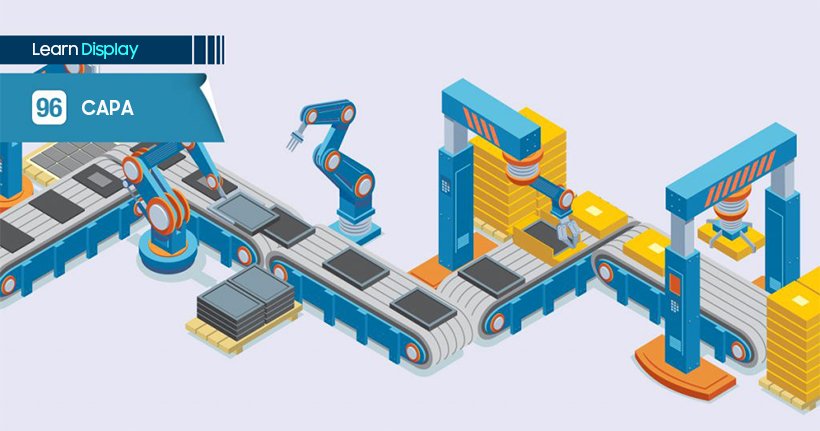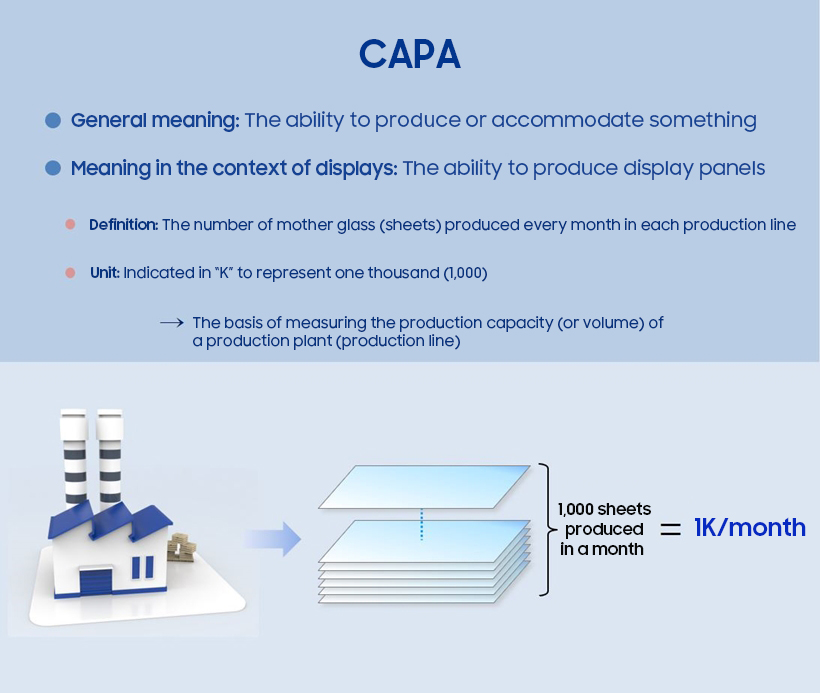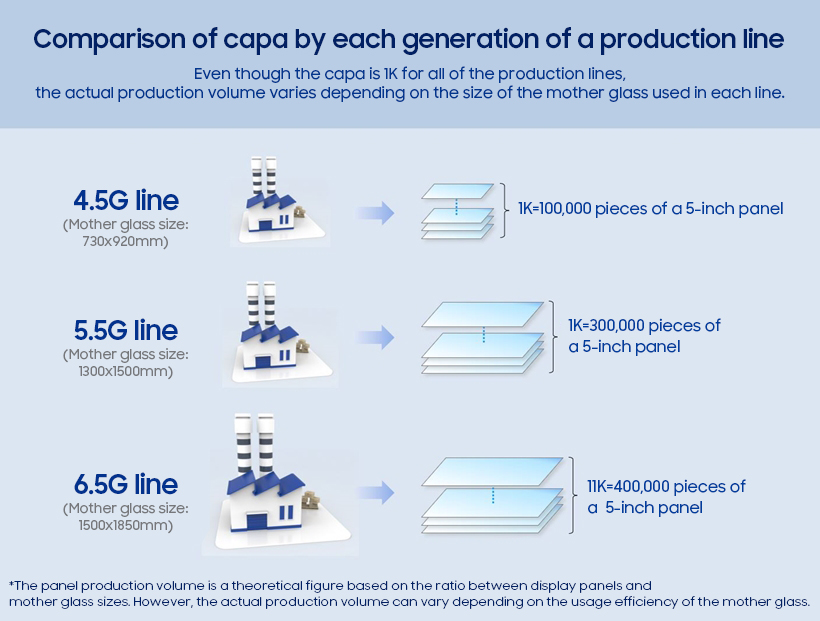
In the display industry, the “capa” is short for “capacity,” referring to the production capacity of a display production line. To be more specific, it refers to the number of mother glass panels that can be put into the production line. A mother glass is a large panel of glass that serves as the basis for the production of an OLED or LCD panel. A single sheet of mother glass is cut into multiple pieces to be processed into display panels for TV or smartphones.

As can be seen in the illustration above, if a production line can use 1,000 sheets of mother glass in a month, the capa becomes 1K/month. If the number of mother glass sheets that can be put into a production line increases to 10,000 and 100,000 in a month, the capa becomes 10K/month and 100K/month, respectively.
The size of the mother glass for a particular production line (generation) can determine the actual production volume. As a single sheet of mother glass is cut into multiple pieces to be then processed as display panels, a production line that accommodates larger mother glass sheets has more surface area to work on, producing more display panels.
For instance, assuming that a small production line for 1G (generation) mother glass and a larger production line for 10.5G mother glass both have the same capa of 1K, the size (surface area) of a mother glass is 100 times bigger for the 10.5G production line. In other words, this production line can create, theoretically, 100 times the number of smartphone display panels that a 1G production line can produce.

In the illustration above, the numbers that indicate the generation, 4.5 and 6, may not seem to have such a wide gap. However, there is a four-fold difference in the actual size of the mother glass put into production between 730*920mm (4.5G) and 1500*1850mm (6G). Therefore, even if the capa is 1K for both production lines, the actual production volume using the 6G mother glass is four times greater than that of the 4.5G mother glass. The panel usage efficiency refers to the ratio of the actual number of display panels obtained from a sheet of mother glass. Therefore, higher the generation of a production line is, greater the efficiency of the capa becomes.



